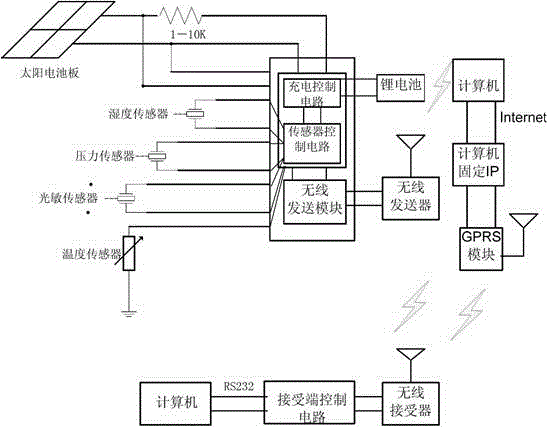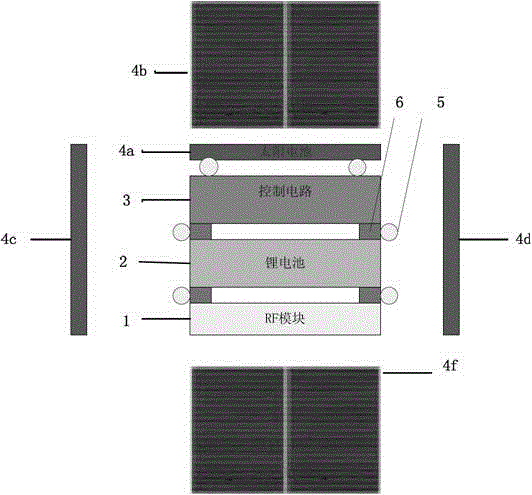Internet of things node and miniaturization integration method thereof
An integrated method and technology of the Internet of Things, applied in the direction of current collectors, electric vehicles, electrical components, etc., can solve problems that do not involve system miniaturization volume or weight indicators, and achieve low power consumption, reduced standby loss, and long transmission distances Effect
- Summary
- Abstract
- Description
- Claims
- Application Information
AI Technical Summary
Problems solved by technology
Method used
Image
Examples
Embodiment Construction
[0014] Node production includes the following steps
[0015] 1. Make the total control circuit, a) according to figure 1 The schematic diagram of the solar battery charging circuit for lithium-ion batteries is shown, and the charging circuit is made. The LTC3105 chip of Linear Company is used in the circuit to charge a single lithium-ion battery. When the voltage of the solar battery is greater than 225mV, SHDN works, and LTC3105 starts to work. The working current is 24μA, and the quiescent current is less than 1μA. The internal boost provides a charging voltage of 3.9V to charge the Li-ion battery; when the battery voltage is less than 225mV, SHDN does not work, and the Li-ion battery supplies power to the IoT node load. The present invention adopts the lithium ion battery of model PL332530 produced by Shenzhen Heyue Electronics Co., Ltd.
[0016] The LTC3015:
[0017] FB: Transformer feedback input setting (Step-Up Converter Feedback Input), connect the Vout resistor di...
PUM
 Login to View More
Login to View More Abstract
Description
Claims
Application Information
 Login to View More
Login to View More - R&D
- Intellectual Property
- Life Sciences
- Materials
- Tech Scout
- Unparalleled Data Quality
- Higher Quality Content
- 60% Fewer Hallucinations
Browse by: Latest US Patents, China's latest patents, Technical Efficacy Thesaurus, Application Domain, Technology Topic, Popular Technical Reports.
© 2025 PatSnap. All rights reserved.Legal|Privacy policy|Modern Slavery Act Transparency Statement|Sitemap|About US| Contact US: help@patsnap.com



